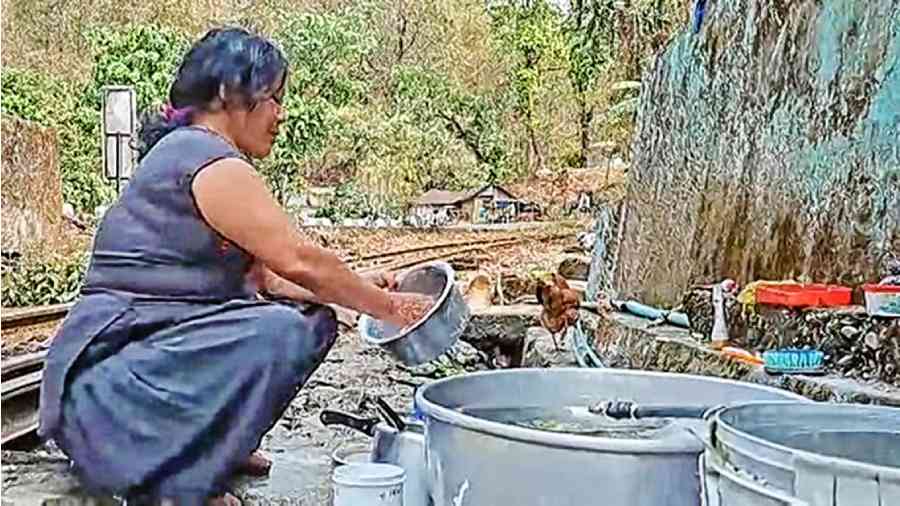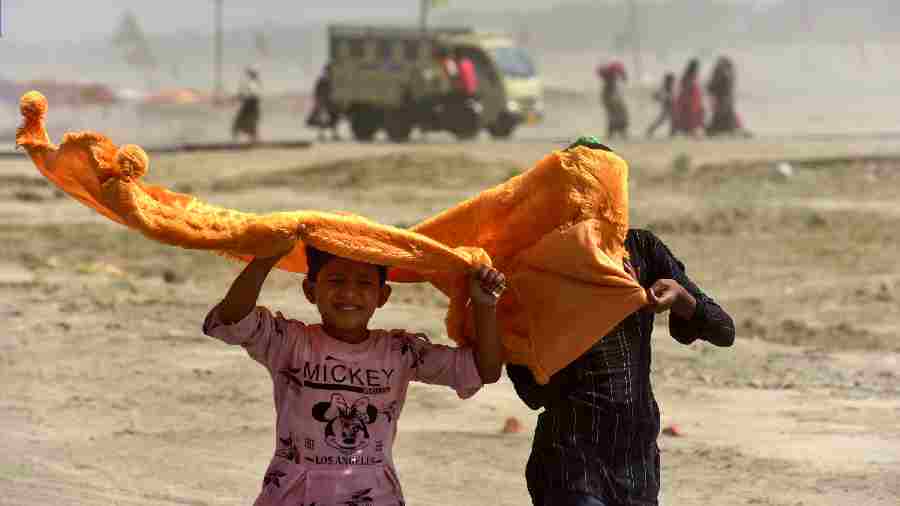The steep surge in temperatures across Bengal over the past few days led to an acute crisis in drinking water supply, right from western districts like Bankura to the lower reaches of the Darjeeling hills.
In districts like Bankura where the mercury soared to 44.1 degrees Celsius — the highest in the state — on Tuesday, the water level of rivers like the Damodar went down because of the scorching heat.
In north Bengal, there is a similar problem in the lower areas of the Kurseong subdivision, where the temperature is hovering around 35 degrees. Most of the hilly streams (termed “jhora” or “khola” in the local parlance) have dried up and people have to buy water or trudge for kilometres to get it from other sources.
Chief secretary H.K. Dwivedi on Tuesday held a virtual meeting with district magistrates and engineers of the state public health engineering department and asked them to ensure that all ongoing drinking water projects under Jal Jeevan Mission across the state were completed at the earliest.
The temperature has been soaring across Bengal for almost a week. The mercury crossed 40 degrees in 12 districts amid forecasts of a heat wave in the next few days.
Sources in the PHE department said the drinking water crisis was acute in Bankura, Purulia, Jhargram and West Burdwan districts. The department has engaged around 400 tankers to supply water in affected areas.
Pulak Roy, the state PHE minister, said areas hit by the water crisis in different districts had been identified. “We are sending tankers to such locations,” he said.
A source has said at least two blocks in Bankura — Saltora and Chhatna — are without drinking water as three out of four pumps, which draw water from the Damodar, are failing because of a drawdown in the river.
“Additional pump sets are being arranged to manage the crisis in a temporary manner,” said an official.
In the north, at least 50,000 residents of Tindharia, Rongtong and Gayabari — all in the Kurseong subdivision and around 25-30km from Siliguri — are facing a similar crisis.
“Most hilly streams from where we collect water have dried up. We have to either buy water or have to walk at least six to seven kilometres along the hilly tracts to get water from other sources,” said Anurag Lakhandri, a Tindharia resident.
On Tuesday, Tindharia recorded a temperature of 34 degrees, which is higher by around eight degrees than the normal range.











